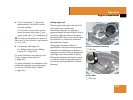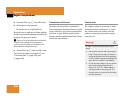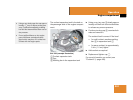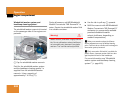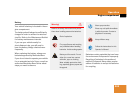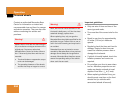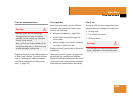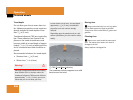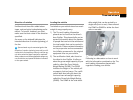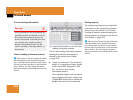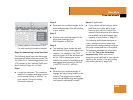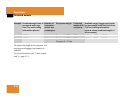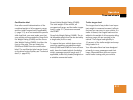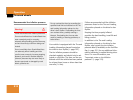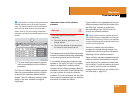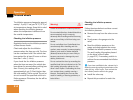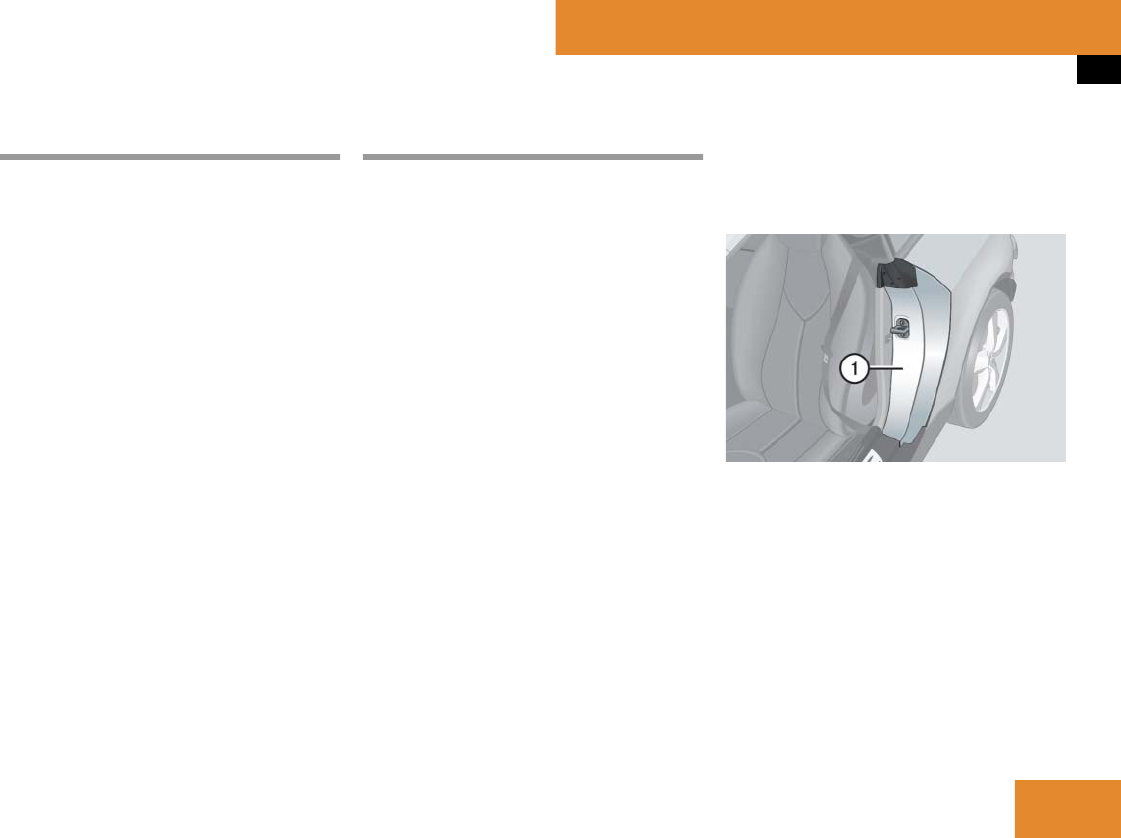
307
Operation
Tires and wheels
Direction of rotation
Unidirectional tires offer added advan-
tages, such as better hydroplaning perfor-
mance. To benefit, however, you must
make sure the tires rotate in the direction
specified.
An arrow on the sidewall indicates the
intended direction of rotation (spinning) of
the tire.
Loading the vehicle
Two labels on your vehicle show how much
weight it may properly carry.
1) The Tire and Loading Information
placard can be found on the driver’s
door B-pillar. This placard tells you im-
portant information about the number
of people that can be in the vehicle and
the total weight that can be carried in
the vehicle. It also contains information
on the proper size and recommended
tire inflation pressures for the original
equipment tires on your vehicle.
2) The certification label, also found on
the driver’s door B-pillar. It tells you
about the gross weight capacity of your
vehicle, called the Gross Vehicle
Weight Rating (GVWR). The GVWR
includes the weight of the vehicle, all
occupants, fuel and cargo. The certifi-
cation label also tells you about the
front and rear axle weight capacity,
called the Gross Axle Weight Rating
(GAWR). The GAWR is the total allow-
able weight that can be carried by a
single axle (front or rear). Never exceed
the GVWR or GAWR for either the front
axle or rear axle.
1 Driver’s door B-pillar
Following is a discussion on how to work
with the information contained on the Tire
and Loading Information placard with
regards to loading your vehicle.
i
Spare wheels may be mounted against the
direction of rotation (spinning) even with a unidi-
rectional tire for temporary use only until the reg-
ular drive wheel has been repaired or replaced.
Always observe and follow applicable temporary
use restrictions and speed limitations indicated
on the spare wheel.



